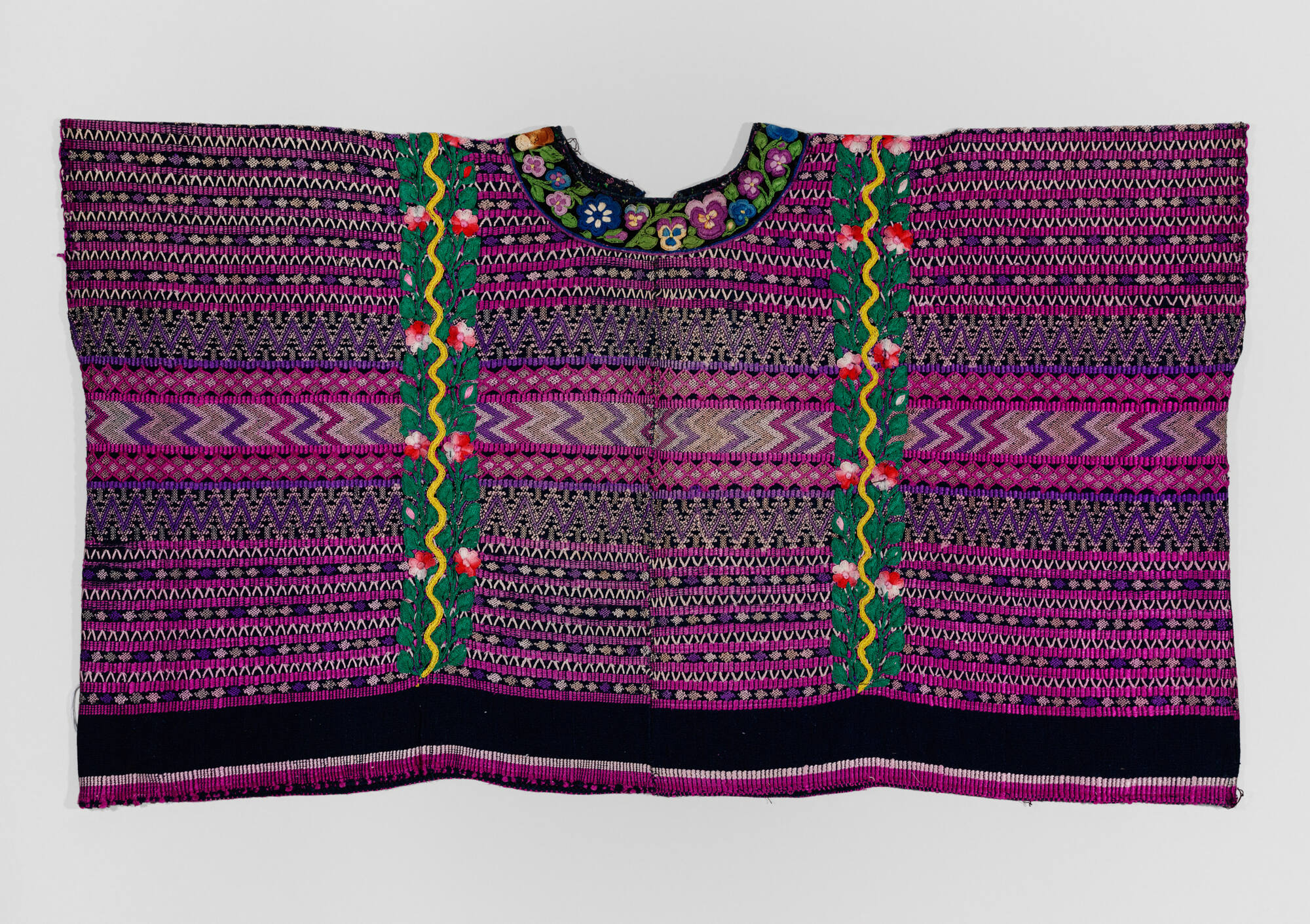
Object Details
Culture
San Martin Jilotepeque, Guatemala
Date
ca. 1935
Medium
Silk brocade
Dimensions
19 1/4 x 33 1/2 inches (48.9 x 85.1 cm)
Credit Line
Acquired through the Museum Membership Fund (Marta Macbeth)
Object
Number
85.031.001
BRIEF DESCRIPTIONThis traditional Guatemalan blouse is called a huipil. Notice the embroidered flora(…)
BRIEF DESCRIPTIONThis traditional Guatemalan blouse is called a huipil. Notice the embroidered floral decorations.WHERE WAS IT MADE?This huipil comes from San Martin Jilotepeque, a municipality in the Chimaltenango department of Guatemala. Residents of San Martin Jilotepeque are of Mayan descent. The area is well known for its production of textiles.HOW WAS IT MADE?Made of silk brocade with various shades of purple threads in geometric patterns on an indigo background, the blouse is made from four woven panels that have been sewn together. The panels were woven on backstrap looms. This huipil features embroidered decorative flowers and leaves on the front and back and around the neck.HOW WAS IT USED?A huipil is an important item of clothing for Mayan women because it is symbolic of the wearer’s culture, village, social and marital status, religious beliefs, and personality. The width and length of the huipil varies depending on where it was made and how it was to be used. Huipils are made to be both versatile and durable.WHY DOES IT LOOK LIKE THIS?A traditional Mayan woman’s outfit or traje consists of four items, a blouse or huipil, a skirt or corte, a shawl or reboao, and a belt or xk’op. To see a reboao in the Johnson Museum’s collection, search for object number 87.037.002 in the keyword search box.Each village has its own traje with a specific shape, color, design and style. The visible variations seen in the textiles are a form of information about the culture. It has been estimated that around the mid-1960s Guatemala had over 200 recognizable costume styles, but that number has significantly declined.To see another huipil in the Johnson Museum’s collection, search for object number 85.031.002 in the keyword search box.












